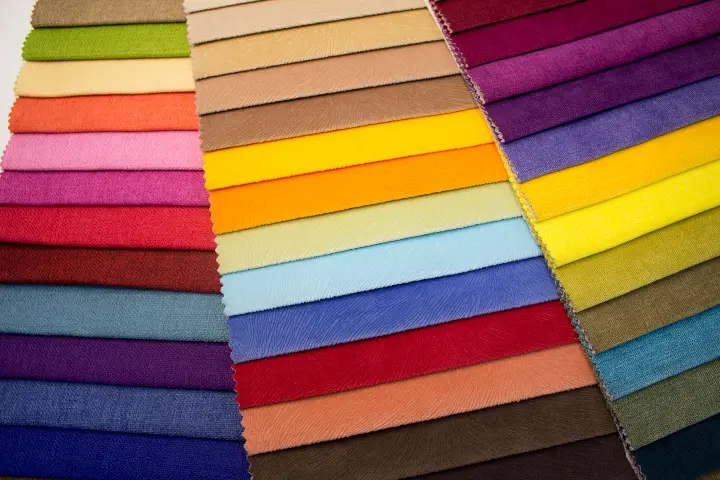Invoering
In de wereld van meubelontwerp en -productie zijn de termen "COM" en "COL" essentieel om het maatwerkproces te begrijpen. Deze afkortingen staan voor "customers' own material" en "customers' own leather" en geven de mogelijkheid aan voor klanten om hun favoriete stoffen of leersoorten te leveren voor maatwerk meubelbestellingen. Deze optie stelt klanten in staat om hun persoonlijke stijl in het ontwerp te verwerken, wat resulteert in unieke stukken die hun unieke smaak en voorkeuren weerspiegelen. Door hun materialen te kiezen, kunnen klanten ervoor zorgen dat het eindproduct harmonieert met hun bestaande decor en voldoet aan hun specifieke esthetische wensen, waardoor hun meubels niet alleen functioneel zijn, maar ook een ware weergave van hun individualiteit.
De beslissing om COM en COL te gebruiken, gaat echter gepaard met verschillende belangrijke overwegingen die moeten worden geëvalueerd. Kosten zijn een belangrijke factor; hoewel het onafhankelijk sourcen van materialen soms kan leiden tot besparingen, kan het ook extra kosten met zich meebrengen, zoals verzending en verwerking. Bovendien kunnen doorlooptijden worden beïnvloed, omdat fabrikanten hun productieprocessen moeten aanpassen om de geleverde materialen te verwerken, wat de levering mogelijk vertraagt. Kwaliteitscontrole is een ander belangrijk aspect, omdat fabrikanten mogelijk beperkt toezicht hebben op de materialen die door klanten worden geleverd, waardoor het essentieel is voor klanten om ervoor te zorgen dat hun gekozen materialen voldoen aan de industrienormen. Bovendien moeten klanten rekening houden met de implicaties voor garanties , omdat aangepaste bestellingen mogelijk andere beleidsregels hebben dan standaardartikelen. Door deze factoren zorgvuldig af te wegen, kunnen klanten weloverwogen beslissingen nemen die hun ervaring met aangepaste meubels verbeteren, wat uiteindelijk leidt tot prachtig vervaardigde stukken die hun leefruimtes verheffen en hun persoonlijke stijl weerspiegelen.
COM demystificeren
(Eigen materiaal van de klant)
COM fabric, een afkorting voor "customers' own material", staat voor het gebruik van materialen die door de klant zijn geleverd bij de productie van meubels. Deze materialen omvatten een breed scala aan keuzes, van meubelstof en outdoor stoffen tot leer en meer. De aantrekkingskracht van COM fabric ligt in het vermogen om klanten in staat te stellen om materialen te kiezen die aansluiten bij hun voorkeuren, waardoor het een ideale keuze is voor degenen die op zoek zijn naar echt unieke meubelstukken.
De voordelen van COM-stof zijn talrijk. Allereerst geeft het klanten toegang tot een gevarieerde selectie van materialen en texturen die mogelijk niet in het standaardaanbod van de fabrikant te vinden zijn. Dit omvat premium stoffen, speciale materialen en zelfs vintage of antieke textielsoorten. Bovendien kan het gebruik van COM-stof vaak een kosteneffectieve keuze zijn, omdat klanten vaak materialen kunnen aanschaffen tegen een lagere prijs dan wat een fabrikant zou vragen.
COM-stof wordt gewaardeerd om de individualiteit die het aan op maat gemaakte meubels verleent. Het biedt de mogelijkheid om stukken te creëren die een ware weerspiegeling zijn van de stijl en voorkeuren van de klant. Door klanten hun materialen te laten kiezen, kunnen fabrikanten meubels produceren die perfect aansluiten bij de visie van de klant, wat tevredenheid garandeert en de algehele esthetiek van de ruimte verbetert.
Uitpakken COL
(Leer van de klant zelf)
COL, wat staat voor "customers' own leather", weerspiegelt het concept van COM, maar heeft specifiek betrekking op leer. Net als COM-stof, stelt COL klanten in staat om hun favoriete leer te leveren voor gebruik in de meubelproductie. Het is een ideale keuze voor personen die op zoek zijn naar uniek, hoogwaardig leer in hun meubels.
Een van de belangrijkste voordelen van het gebruik van COL is het brede spectrum aan leersoorten en kleuren die beschikbaar zijn, vaak meer dan wat er in de standaardcatalogus van een fabrikant wordt aangeboden. Dit omvat premium leer, speciale huiden en zelfs vintage of antiek leer. Net als bij COM kan het gebruik van COL kosteneffectief blijken, waardoor klanten kwaliteitsleermaterialen tegen lagere kosten kunnen aanschaffen.
Het gebruik van COL maakt ook een mate van maatwerk mogelijk die het algehele ontwerp van het meubilair kan verbeteren. Klanten kunnen leersoorten selecteren die niet alleen passen bij hun esthetische voorkeuren, maar ook specifieke kwaliteiten bieden, zoals duurzaamheid of textuur. Deze flexibiliteit is met name aantrekkelijk voor degenen die een samenhangende look in hun interieur willen creëren.
De praktische toepassing van COM en COL bij bestellingen van maatwerkmeubels
Wanneer klanten ervoor kiezen om COM of COL te integreren in hun bestellingen voor maatwerkmeubilair, leveren ze de materialen doorgaans rechtstreeks aan de fabrikant. Het proces kan variëren op basis van de specificaties van de fabrikant en de gekozen materialen of leersoorten.
Bijvoorbeeld, wanneer een klant zijn stof voor een op maat gemaakte bank levert, kan de fabrikant de hoeveelheid stof bepalen die nodig is op basis van de afmetingen van de bank. De klant zou dan de vereiste hoeveelheid stof kopen en deze naar de fabrikant sturen. De fabrikant gebruikt op zijn beurt de geleverde stof om een op maat gemaakte bank te bekleden in overeenstemming met de specificaties van de klant. Een soortgelijk proces is van toepassing op COL, behalve dat leer het materiaal van keuze is. In dit geval levert de klant het leer, dat de fabrikant gebruikt om het meubelstuk te bekleden.
Het is belangrijk dat klanten in gedachten houden dat de opname van COM of COL een langere tijdlijn met zich mee kan brengen in vergelijking met het bestellen van een standaard meubelstuk. Dit komt omdat de fabrikant zich moet aanpassen aan en moet werken met de geleverde materialen of leersoorten. Bovendien moeten klanten zich ervan bewust zijn dat het gebruik van hun materialen of leer het moeilijker kan maken om de kwaliteit te controleren en de levensduur van het item te garanderen.
Ondanks de mogelijke uitdagingen zijn COM en COL immens populair in de meubelindustrie. Hun aantrekkingskracht ligt in de mogelijkheid om echt unieke en gepersonaliseerde stukken te creëren die de stijl en smaak van de klant weerspiegelen.
Belangrijke overwegingen bij het gebruik van COM of COL
Bij de keuze voor het gebruik van COM of COL bij bestellingen van maatwerkmeubilair moet u rekening houden met een aantal belangrijke factoren:
1. Kosten: Hoewel het gebruik van materialen of leer van klanten kosteneffectief kan zijn, is het essentieel om rekening te houden met de prijs van deze materialen en eventuele extra kosten met betrekking tot hun verzending en verwerking. De kosten van het gebruik van COM of COL kunnen ook langere doorlooptijden omvatten, wat verder bijdraagt aan de totale kosten van de aangepaste bestelling.
2. Kwaliteitscontrole en duurzaamheid: Aangezien fabrikanten mogelijk beperkte controle hebben over de kwaliteit van de materialen of het leer dat door de klant wordt geleverd, is het cruciaal om ervoor te zorgen dat deze voldoen aan de normen van de fabrikant voor kwaliteit en duurzaamheid. Klanten moeten zich ook vertrouwd maken met het garantie- en retourbeleid voor aangepaste bestellingen, dat kan verschillen van die voor standaardbestellingen.
3. Patroonoverwegingen: Veel stoffen en leersoorten hebben patronen, die elk worden gekenmerkt door een "herhaling" waar de patrooncyclus begint en eindigt. Klanten die kiezen voor patroonmaterialen moeten de fabrikant specifieke details verstrekken, waaronder de grootte van de patroonherhaling en de gewenste richting (verticaal of horizontaal). Daarnaast is het verstandig om extra materiaal te leveren om een naadloze patroonuitlijning te garanderen.
4. Realistische verwachtingen: Klanten moeten realistische verwachtingen hebben over het eindproduct bij gebruik van COM of COL. Het is essentieel om te begrijpen dat de uitkomst mogelijk niet precies overeenkomt met de standaardaanbiedingen van de fabrikant en dat er variaties in kleur of textuur kunnen ontstaan door de gebruikte materialen of leersoorten.
5. Richtlijnen van de fabrikant: Elke fabrikant kan specifieke richtlijnen hebben met betrekking tot de soorten materialen die zij accepteren voor COM en COL. Het is essentieel dat klanten deze richtlijnen bekijken om ervoor te zorgen dat hun gekozen materialen geschikt zijn voor het beoogde meubelstuk. Fabrikanten kunnen voorafgaande goedkeuring van de materialen vereisen voordat ze doorgaan met de bestelling.
6. Verzending en afhandeling: Klanten moeten rekening houden met de logistiek van het verzenden van hun materialen naar de fabrikant. Dit omvat het begrijpen van verzendkosten, mogelijke vertragingen en de noodzaak van goede verpakking om schade tijdens het transport te voorkomen.
7. Duurzaamheid en inkoop: Voor milieubewuste klanten is het duurzaam inkopen van materialen een belangrijke overweging. Klanten moeten navraag doen naar de herkomst van de materialen die ze kiezen en of deze aansluiten bij hun waarden met betrekking tot duurzaamheid en ethische inkoop.
8. Samenwerking met ontwerpers: Als u met een interieurontwerper werkt, is samenwerking essentieel. Ontwerpers kunnen waardevolle inzichten bieden in de geschiktheid van materialen en helpen ervoor te zorgen dat het eindproduct voldoet aan de visie van de klant.
Conclusie
Samenvattend biedt het gebruik van COM (customers' own material) en COL (customers' own leather) in maatwerk meubelbestellingen een belangrijke kans om unieke en gepersonaliseerde resultaten te creëren. COM fabric stelt klanten in staat om hun favoriete materialen te selecteren, terwijl COL dezelfde flexibiliteit biedt met leer. Deze opties versterken de individualiteit van maatwerk meubelstukken, waardoor ze aansluiten bij de specifieke stijl en voorkeuren van de klant.
De beslissing om COM of COL te gebruiken vereist echter een grondige beoordeling van verschillende belangrijke factoren. Kosten zijn een primaire overweging, aangezien het onafhankelijk sourcen van materialen kan leiden tot besparingen, maar ook extra verzend- en administratiekosten met zich mee kan brengen. Levertijden kunnen langer zijn, aangezien fabrikanten zich moeten aanpassen aan de geleverde materialen. Kwaliteitscontrole is cruciaal, aangezien fabrikanten mogelijk beperkt toezicht hebben op de materialen die door klanten worden geleverd, waardoor het essentieel is om ervoor te zorgen dat ze voldoen aan de vereiste normen. Bovendien moeten klanten zich bewust zijn van de garantie-implicaties, aangezien aangepaste bestellingen mogelijk andere beleidsregels hebben dan standaardartikelen.
Door de complexiteit van COM en COL te begrijpen, kunnen klanten weloverwogen beslissingen nemen die leiden tot prachtig vervaardigde, unieke meubels. Of u nu uw huis wilt vernieuwen of een opvallend statement piece wilt creëren, het verkennen van COM en COL-opties kan u helpen uw ontwerpdoelen te bereiken en er tegelijkertijd voor te zorgen dat uw meubels uw unieke esthetiek weerspiegelen.






